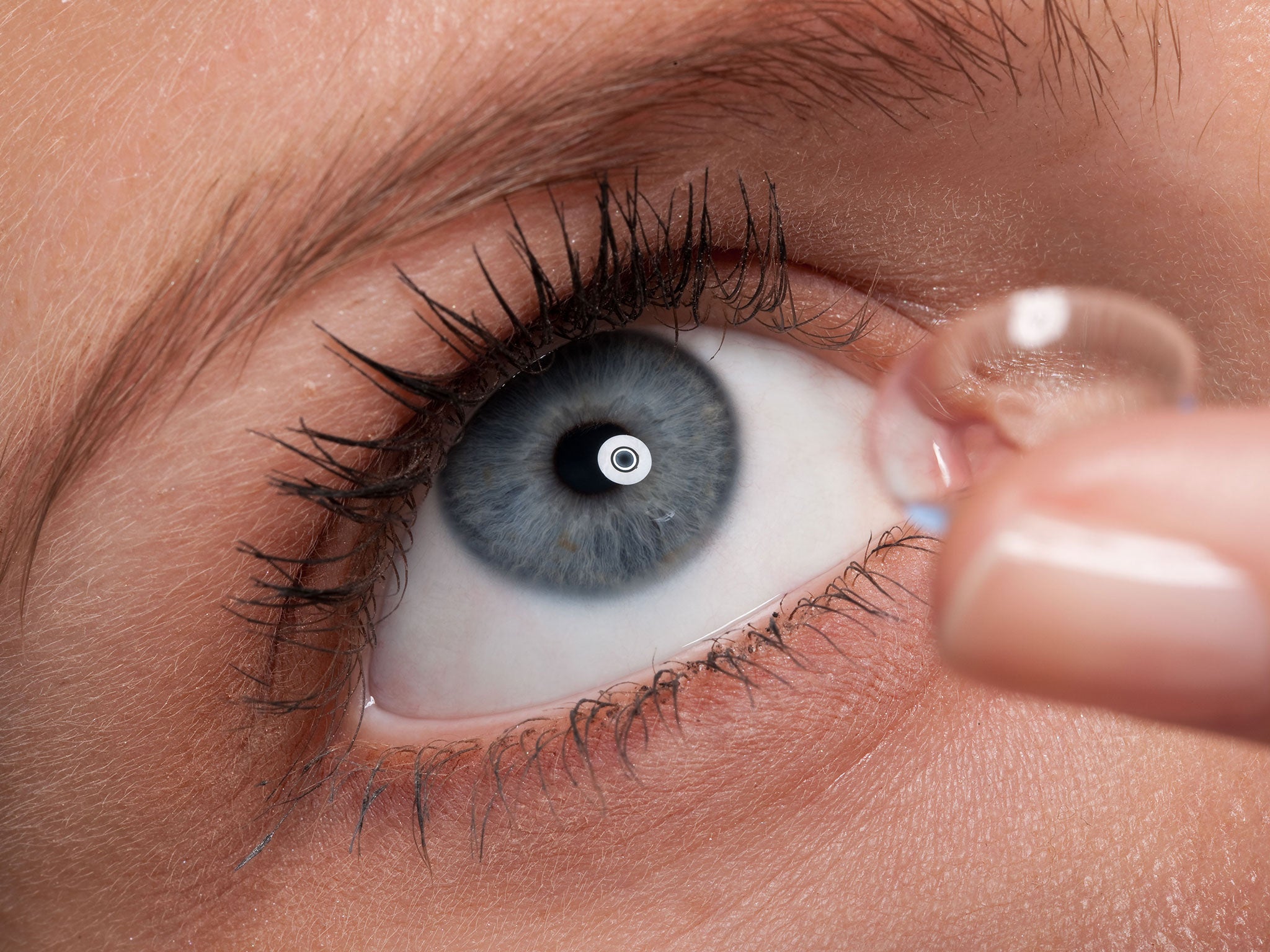Wearing daily contact lenses could lead to inflammation and eye infections, study finds
Daily lenses were discovered to transfer bacteria from the skin to the eye

Your support helps us to tell the story
From reproductive rights to climate change to Big Tech, The Independent is on the ground when the story is developing. Whether it's investigating the financials of Elon Musk's pro-Trump PAC or producing our latest documentary, 'The A Word', which shines a light on the American women fighting for reproductive rights, we know how important it is to parse out the facts from the messaging.
At such a critical moment in US history, we need reporters on the ground. Your donation allows us to keep sending journalists to speak to both sides of the story.
The Independent is trusted by Americans across the entire political spectrum. And unlike many other quality news outlets, we choose not to lock Americans out of our reporting and analysis with paywalls. We believe quality journalism should be available to everyone, paid for by those who can afford it.
Your support makes all the difference.Wearing contact lenses may interfere with the delicate balance of microorganisms living naturally on the eye’s surface, which could explain potentially serious infections among some users, a study has found.
Researchers discovered that wearing daily contact lenses appears to transfer bacteria from the skin to the eye, and say this could result in wearers suffering from inflammation and infections.
The study was based on a relatively small sample of nine contact lens users compared with 11 non-wearers, but the scientists carried out a detailed genetic analysis to identify the complete microbial “zoo” living on the eye and the nearby skin of each participant.
“Our research clearly shows that putting a foreign object, such as a contact lens, on the eye is not a neutral act,” said Maria Gloria Dominguez-Bello, lead researcher on the study at New York University’s Langone Medical Centre.
“These findings should help scientists to better understand the long-standing problem of why contact lens wearers are more prone to eye infections than non-lens wearers.”
The British Contact Lens Association, which represents the UK industry, said dirty or dusty contact lenses can cause temporary discomfort or redness but these symptoms usually improve once the lenses are removed.
More serious infections of the cornea – the transparent membrane covering the front of the eyeball – are much rarer, affecting about four in 10,000 contact lens wearers. Vision loss due to corneal infections associated with contact lenses is even rarer, affecting about six out of 100,000 wearers each year, the association said.
“There has been an increase in the prevalence of corneal ulcers following the introduction of soft contact lenses in the 1970s,” said Jack Dodnick, professor of ophthalmology at NYU Lagone, who took part in the latest study.
“This study suggests that because the offending organisms seem to emanate from the skin, greater attention should be directed to eyelid and hand hygiene.”
The “microbiome” or mix of microorganisms living on the surface of the eyeballs of contact lens wearers turned out to be more similar to parts of the skin just below the eye compared to the microbiome of the eyes of people who do not wear lenses. However, the number of bacterial strains and subtypes were greater in non-lens users’ eyes compared to users, with the former having higher levels of Staphylococcus bacteria, which have been linked to eye infections.
“We hope our future experiments will show whether these changes in the eye microbiome of lens wearers are due to fingers touching the eye, or from the lens’s direct pressure affecting and altering the immune system in the eye and what bacteria are suppressed or allowed to thrive,” Dr Dominguez-Bello said.
Some 5,245 distinct bacterial strains and subtypes were identified on the surface of the eyes of contact lens wearers compared to 5,592 strains and subtypes in non-users.
Join our commenting forum
Join thought-provoking conversations, follow other Independent readers and see their replies
Comments